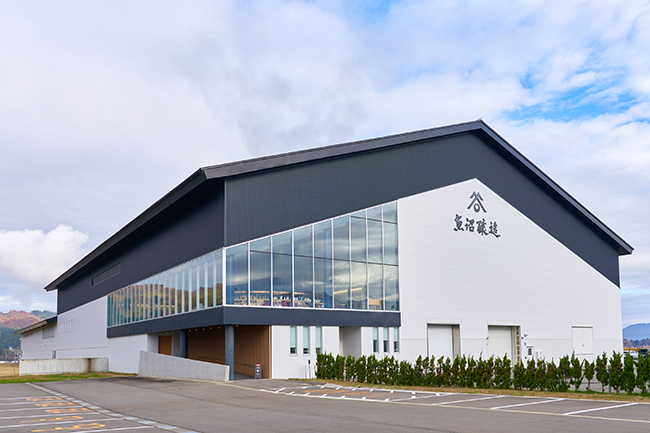Uonuma Jozo: Rice Koji & Koji Amazake from Snow Country
Dec 19,2022
Uonuma Jozo: Rice Koji & Koji Amazake from Snow Country
Dec 19,2022
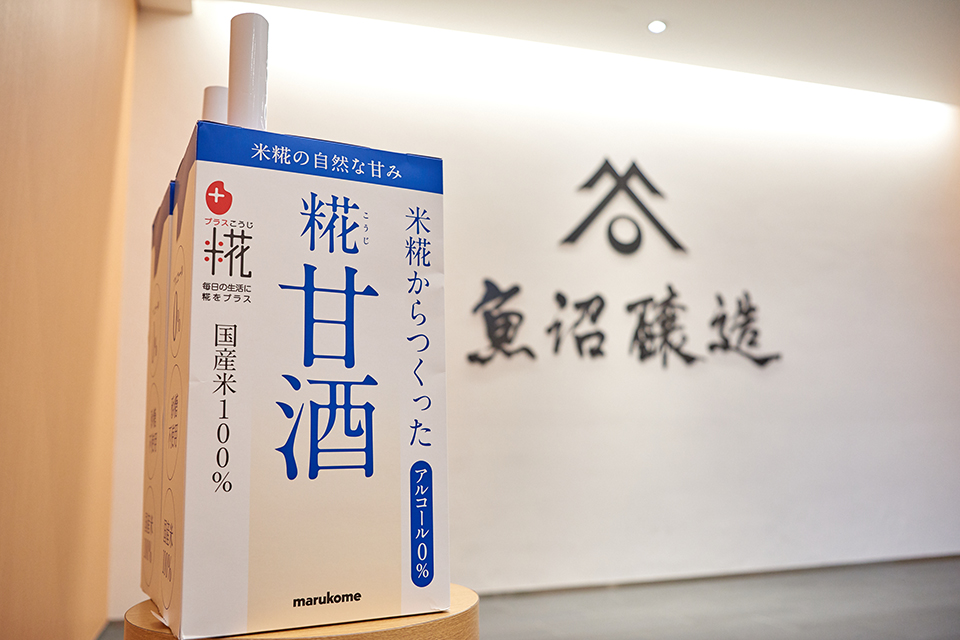

With over 80 percent of the municipality covered in forest, Uonuma in Niigata Prefecture is a nature lover’s paradise. Situated in a basin surrounded by a triad of majestic peaks called Three Mountains of Echigo, it gets more than three meters of snowfall in the winter. Few places in Japan get more.
In spring 2019, Uonuma Jozo arrived here in quest of the snowmelt that waters the land and nourishes the trees. It was also attracted by the rich soil and the climate. The place has just the right difference in daytime and nighttime temperatures for growing rice.
Uonuma Jozo is dedicated to bringing rice koji and the sweet fermented rice beverage koji amazake to more people. It produces them in the same time-honored way as the handcrafted kind. Here Uonuma Jozo’s Horiuchi Sayaka takes us on a tour of the meticulous production process.
Get off the train at JR Urasa Station, cross the Uono River, and just before reaching the Mizunashi River, you’ll notice a plume of white smoke in the sky to your right. It comes from the rice being steamed at Uonuma Jozo. Uonuma Jozo is located in a corner of the Mizunosato Industrial Park, which is built on solid ground with plentiful groundwater.
This facility is one of the largest rice koji factories in the world. In the cold, crisp air, it appears as much a natural feature of the landscape as the towering peaks and the flowing river waters.
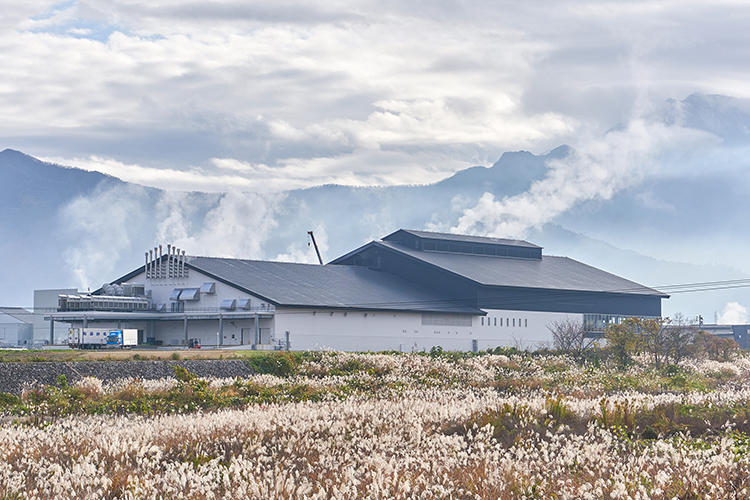
“Here can be found all the ingredients necessary to making delicious-tasting rice koji and koji amazake.”
Rice koji is used as a fermenting aging, and there is no better place to make it than here. After all, this is where one of Japan’s finest rice varieties is grown, Uonuma Koshihikari: the product of swings between daytime and nighttime temperatures such as only occur in the mountains.
Koji amazake requires excellent water as well. The spring water of Uonuma, which issues from the Three Mountains of Echigo, is remarkably soft, and it has been used since olden times for growing rice and vegetables and brewing sake. The presence of such a water supply is one of the reasons that Uonuma Jozo chose this location.

1778-meter-high Mount Hakkai in fall
Plus the area has a long and thriving tradition of fermentation, which was the clincher.
Fermenting foods to preserve them for storage has always been part of life in Uonuma with its harsh winters. The place veritably abounds in fermented foods made using koji and miso. Local families still enjoy them today. A case in point is kikkoshi-zuke, a traditional pickle produced using nesekoji, a substance made with non-glutinous rice and koji.
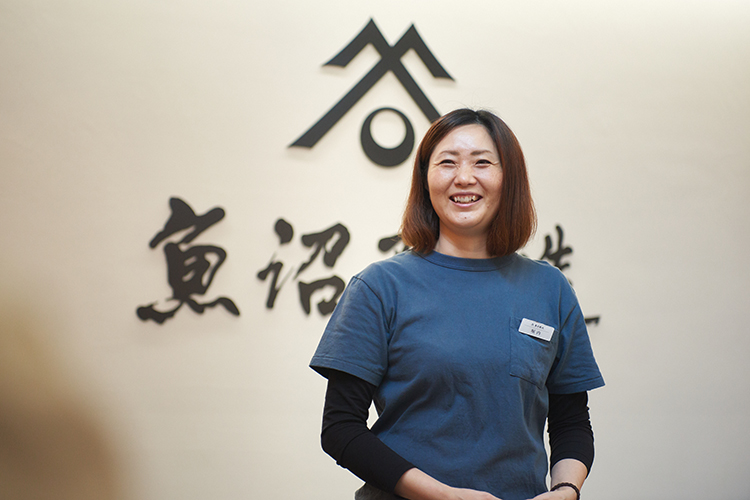
Horiuchi Sayaka of Uonuma Jozo Co., Ltd.
“Uonuma’s inhabitants know how to come to terms with nature, and many lessons on making great-tasting rice koji and koji amazake can be gleaned from their lifestyle. Our factory may be a modern facility, but by keeping alive time-honored production techniques, we hope to prove a worthy heir to the traditional flavor that has been passed down over the generations.”
Indeed, Uonuma Jozo’s rice koji production process is simply an automated version of what the locals have long done by hand.
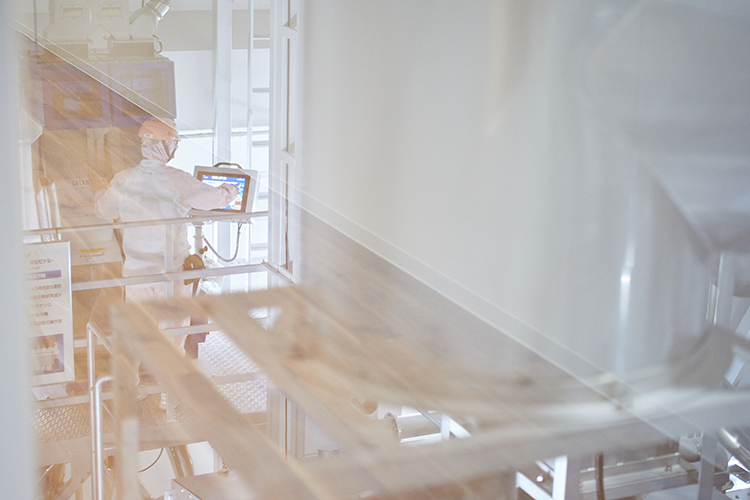
<The rice koji production process>
1.Soaking
The rice is soaked in plenty of water. At Uonuma Jozo, it is soaked in the soft water of Uonuma for over ten hours.
2.Steaming
Once soaked, the water-saturated rice is slowly steamed. Even on the factory tour, the deep, rich aroma of the rice reaches you though the glass.
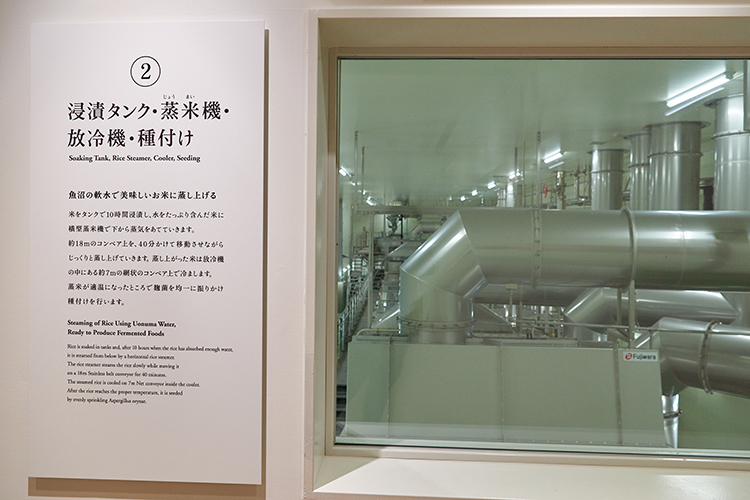
3.Cooling
The steamed rice is allowed to cool well.
4.Inoculation
Once cooled to the right temperature, the rice is inoculated by sprinkling it with koji spores.
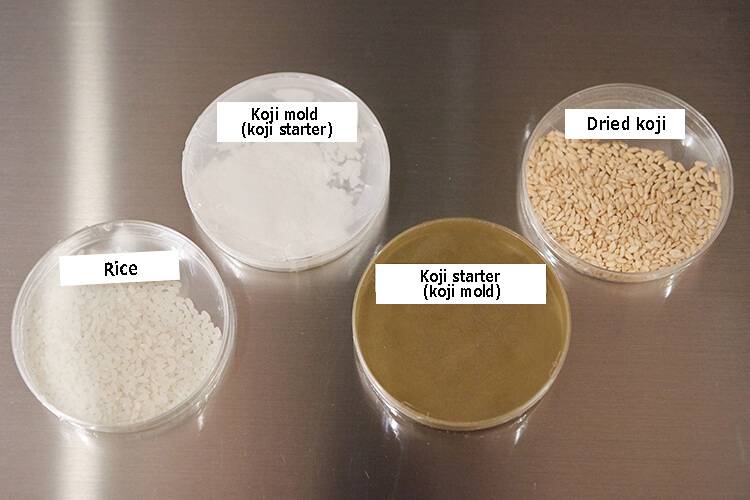
5.Growing the koji
The Uonuma Koji factory has a circular koji production facility with a diameter of sixteen meters, which can produce twenty metric tons of rice koji in two days. Here the steamed and inoculated rice is slowly stirred while being aerated. This process causes the koji mold to grow well, yielding high-quality rice koji. The koji is then stored in separate tanks depending on what it is to be used for: salted koji, amazake, or whatever.
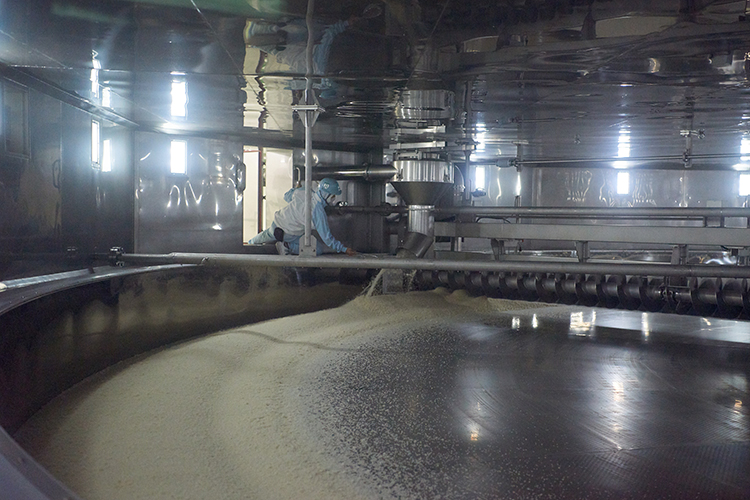
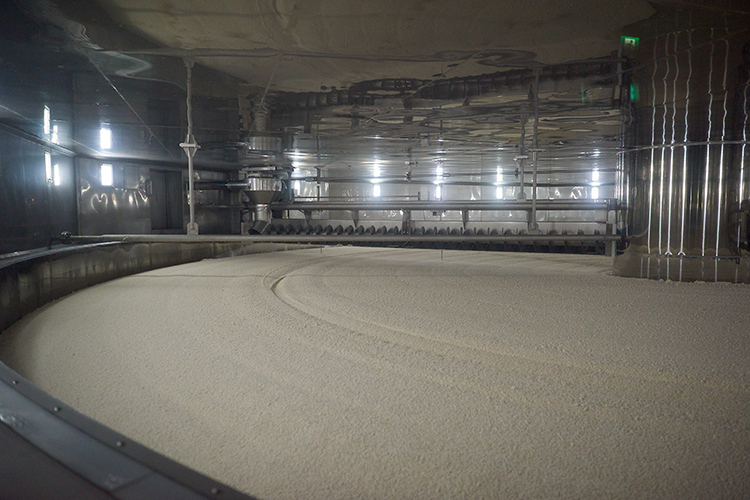
When making rice koji manually, the rice is stirred by hand, wrapped in a blanket, and slowly allowed to ferment. This process is faithfully reproduced by machine in the factory. While rigorously controlling the temperature, the factory staff lovingly tend to the rice koji growing in the tank—much as the older women of the community have traditionally kept a watchful eye on it.
The factory may look like a systematically run modern facility, but the ingredients it uses are the same as those with which Uonuma has always been blessed. Everywhere it radiates gratitude to the rice koji that has long been a staple of life here.
Visitors also get to observe how the rice koji so produced is used to make finished products like salted koji and shoyu koji (koji with soy sauce). The last stop is the inspection room. Here a large team of staff keep constantly busy inspecting products to ensure that they reach the customer in perfect condition.
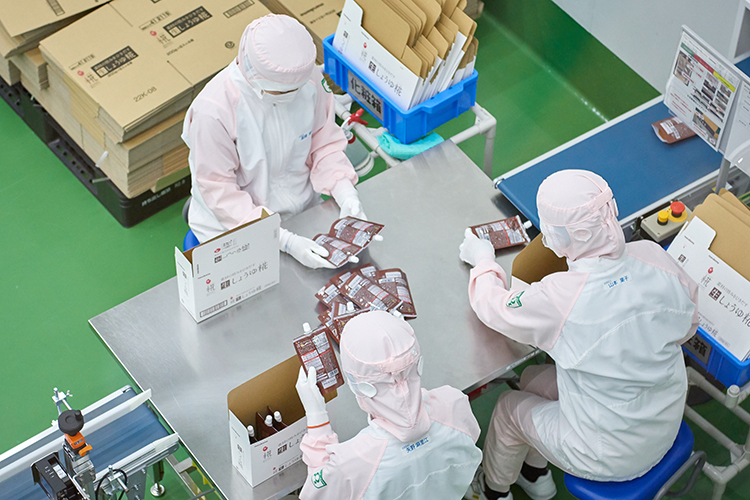
You have to prebook a factory tour, but there’s one area of the Uonuma Jozo factory you can visit without a reservation. That’s Uonuma Koji Salon, where you can enjoy the great taste of fermented foods like rice koji and explore them in greater depth.

Uonuma Koji Salon has a cafe where you can enjoy desserts made with koji amazake, as well as a library stocked with books on fermentation and a shop selling various merchandise.
Because the salon requires no reservations, locals who have finished working in the fields harvesting rice or whatever often visit for refreshments. Serving as a place to relax is an ideal outcome for Uonuma Jozo, which always wants to be there for the community.
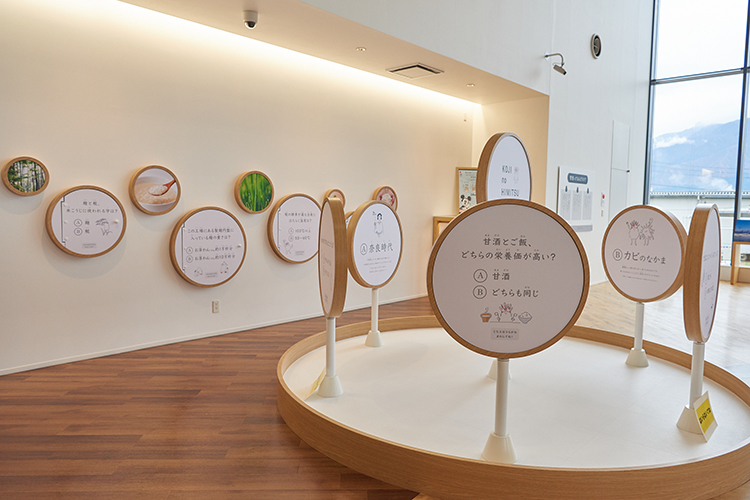
Particularly recommended is koji amazake direct from the factory. This koji amazake, unlike that sold in stores, is undiluted, so it is thick and extremely rich. The rice koji gives it a lumpy consistency reminiscent of old-fashioned amazake. Another item worth trying is the koji amazake soft-serve ice cream, which has a profound sweetness with faint overtones of koji. Chiffon cake, apple pie, and salted koji pastries are available as well.
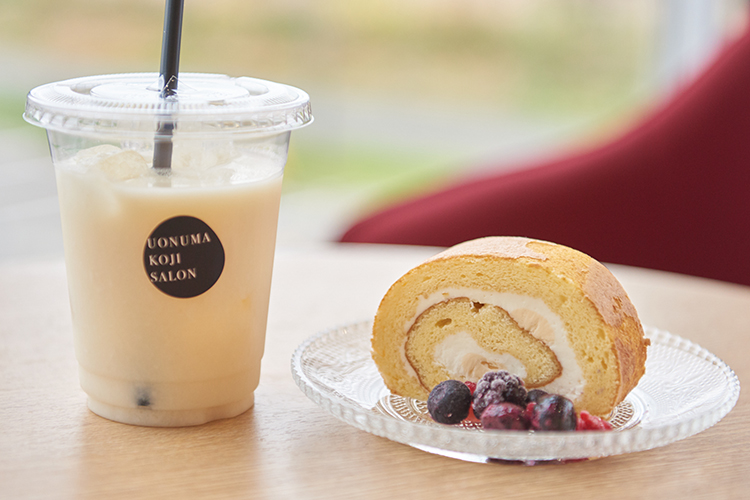
And then there’s the shop, which “many visitors drop by last to buy stuff they saw on the factory tour.” It features a lineup of merchandise available only from Uonuma Jozo, including salted koji and shoyu koji made with 100% Uonuma Koshihikari rice. No wonder people leave with armfuls of presents for family, friends, and neighbors.
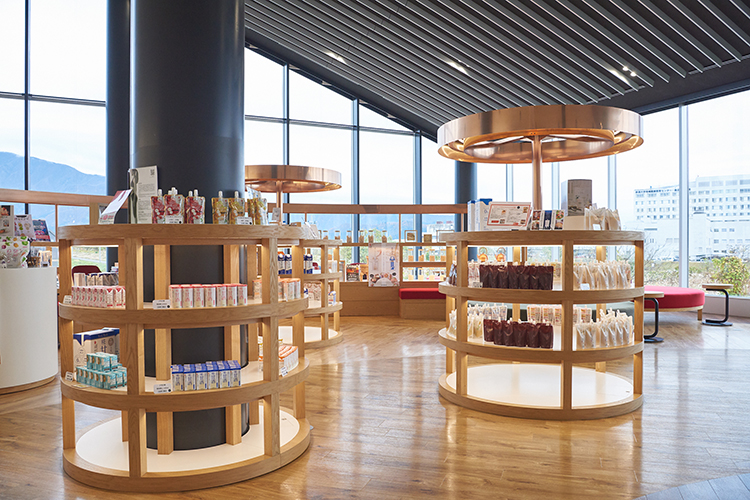
“While Uonuma Jozo boasts world-class production facilities, our products are, at their core, underpinned by the same artisanal care and dedication as rice koji and amazake made in the home. We intend to remain true to our mission of making what we call ‘life-creating’ products— and never forget to be grateful for nature’s blessings.”

